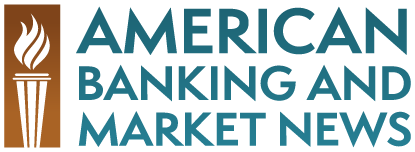In what some are describing as a 21st century, “Morganization”, J.P. Morgan Chase (JPM) is being forced to take ownership in bankrupt companies, including health club Bally Total Fitness Holding Corp., to salvage the value of their original loans.
The decision may be a glance at how the banking industry plans to survive the expected wave of commercial loan defaults expected to hit epidemic proportions in 2010.
The Wall Street Journal reports that unlike when founder John Pierpont Morgan Sr. reorganized many companies in the early part of the 20th century, these moves are being made reluctantly. In fact, J.P. Morgan Chase has found themselves with few options but to cancel big chunks of corporate loans in exchange for stakes in companies it never intended to acquire.
Currently, J.P. Morgan Chase & Co. owns a 5-10% stake in dozens of companies. However some of its holdings are significantly larger, and more influential, such as a 45% stake in Bally’s.
Kevin Corgan, head of J.P. Morgan’s distressed and high-yield debt trading desk, said Bally, one of the U.S.’s largest health club chains, had intrigued their distressed debt trading desk for years. He and his colleagues thought Bally was a “good company, bad balance sheet” situation, meaning the company — with 270 clubs and about 3.5 million members — could succeed if it could reduce its high debt load.
The bank began accumulating a stake in the company’s bonds about a year ago when they were trading at about 30 cents on the dollar. It continued to build its position after Bally entered bankruptcy protection for the second time since 2007, ultimately investing roughly $60 million.
While the bank’s strategy at the outset wasn’t to acquire Bally as a so-called loan-to-own investment, “we were prepared if Bally filed and we ended up owning the company,” Mr. Corgan said Investing alongside J.P. Morgan was Anchorage Advisors, a New York hedge fund with which it has a close relationship.
Patrick Daniello, head of the 40-person unit described members of J.P. Morgan’s workout group as “finance and banking experts. We’re not operating experts. We don’t have necessarily the time or operational skill-set to insert ourselves that deeply into the strategy of a company.” As such, the bank devotes most of its time to picking new board members to oversee the holdings.
Still, with a significant financial stake, the bank is not timid to making their views known. Maximize the value of these new investments is important.
As part of Bally’s bankruptcy restructuring, J.P. Morgan received a 45% equity stake in the company. As part of the reorganization, the company cut its debt by about $700 million to less than $100 million. J.P. Morgan and Anchorage control the board, each receiving two board seats and appointing four other outside directors.
In addition to its stake in Bally’s, several media companies are owned in part by the bank. In addition to Journal Register, the bank now owns or is poised to own stakes in newspaper publisher Freedom Communications Inc., Reader’s Digest Association Inc. and Source Interlink.
Lenders such as J.P. Morgan are “finding themselves in a very unnatural environment,” said Willkie Farr & Gallagher attorney Marc Abrams, who represented Journal Register in its bankruptcy. Historically, “to become an operator was anathema to a lender.”
The move towards banks taking ownership stakes in troubled companies extends beyond J.P Morgan to include banks such as Citigroup Inc. (C), Bank of America Corp. (BAC) and Credit Suisse Group (CS).






